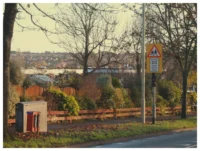- Home
- Articles
- Architectural Portfolio
- Architectral Presentation
- Inspirational Stories
- Architecture News
- Visualization
- BIM Industry
- Facade Design
- Parametric Design
- Career
- Landscape Architecture
- Construction
- Artificial Intelligence
- Sketching
- Design Softwares
- Diagrams
- Writing
- Architectural Tips
- Sustainability
- Courses
- Concept
- Technology
- History & Heritage
- Future of Architecture
- Guides & How-To
- Art & Culture
- Projects
- Interior Design
- Competitions
- Jobs
- Store
- Tools
- More
- Home
- Articles
- Architectural Portfolio
- Architectral Presentation
- Inspirational Stories
- Architecture News
- Visualization
- BIM Industry
- Facade Design
- Parametric Design
- Career
- Landscape Architecture
- Construction
- Artificial Intelligence
- Sketching
- Design Softwares
- Diagrams
- Writing
- Architectural Tips
- Sustainability
- Courses
- Concept
- Technology
- History & Heritage
- Future of Architecture
- Guides & How-To
- Art & Culture
- Projects
- Interior Design
- Competitions
- Jobs
- Store
- Tools
- More
Essential Tips for a Useful Garden: Maximize Space and Productivity
Transform your outdoor space into a vibrant, useful garden with our comprehensive guide! Discover practical tips on thoughtful design, selecting high-yield plants, and maintaining a sustainable ecosystem. Learn about effective watering techniques, pest control strategies, and the importance of garden tools for maximizing productivity.

Creating a useful garden goes beyond just planting seeds and watering plants. It’s about designing a space that thrives and meets our needs, whether it’s for fresh produce, a peaceful retreat, or a vibrant ecosystem. With a little planning and creativity, we can transform our outdoor spaces into productive havens that benefit both us and the environment.

Table of Contents
ToggleTips for a Useful Garden
- Plan for space and sunlight: Assess the garden layout, ensuring ample sunlight reaches each plant. Choose spots with at least six hours of sunlight daily for vegetables and flowers.
- Select high-yield plants: Prioritize growing productive plants like tomatoes, peppers, and herbs. These often require less maintenance while providing significant harvests.
- Incorporate native plants: Utilize native plants that thrive in local climates. These require fewer resources, support local wildlife, and enhance biodiversity.
- Design with pathways: Create clear pathways for easy access to all areas. Pathways reduce soil compaction and provide a neat, organized appearance.
- Rotate crops annually: Practice crop rotation to maintain soil health and minimize pest issues. Rotate families of crops each year to reduce disease risk.
- Utilize vertical gardening: Maximize space by implementing vertical gardening techniques. Use trellises, wall planters, or hanging pots to grow plants upwards.
- Install a rainwater collection system: Collect rainwater to irrigate the garden. This conserves water and provides a natural source for hydration.
- Implement companion planting: Pair compatible plants to enhance growth and deter pests. For example, plant basil near tomatoes to improve flavor and repel insects.
- Maintain healthy soil: Test soil pH and nutrient levels regularly. Amend soil with organic matter to improve its structure and fertility.
- Create a compost area: Establish a compost system to recycle kitchen scraps and yard waste. Compost enriches soil and reduces waste.
By applying these tips, we can maximize the functionality of our gardens while promoting sustainability and environmental health.
Planning Your Garden Space
Effective garden planning sets the foundation for a useful garden. It involves careful thought on location and layout to optimize for sunlight, accessibility, and productivity.

Choosing the Right Location
Selecting the right location is crucial for plant growth. We assess sunlight exposure, aiming for at least 6 to 8 hours of direct sunlight each day. We consider wind patterns, ensuring plants benefit from protection against harsh winds. We also analyze drainage to prevent waterlogging, allowing plants to thrive without root rot. Additionally, we check proximity to water sources, making irrigation more efficient.
Designing a Functional Layout
Crafting a functional garden layout enhances usability and accessibility. We prioritize clear pathways to facilitate movement and maintenance. Linear rows work well for traditional gardens, while raised beds offer easier access and improved drainage. We segment the garden into zones, grouping plants with similar light and water needs to streamline care. Utilizing vertical gardening techniques helps maximize space, allowing for more plants in smaller areas. Incorporating seating areas can create inviting spaces for relaxation and enjoyment.
Selecting the Right Plants
Selecting suitable plants is essential for creating a useful garden. By understanding their needs and employing effective planting strategies, we can enhance both productivity and aesthetic appeal.

Understanding Plant Needs
Understanding the specific needs of plants supports optimal growth and yield. We assess factors like sunlight, water, soil type, and climate. Each plant has unique requirements; for instance, tomatoes thrive in full sun and well-drained soil, while ferns prefer shaded, moist conditions.
Next, we consider spacing and compatibility. Proper spacing prevents overcrowding, which reduces competition for nutrients. Many plants benefit from humidity and soil conditions; knowing these factors allows us to group plants effectively, ensuring they flourish.
Companion Planting Strategies
Companion planting strategies maximize garden productivity and minimize pests. By planting complementary species together, we can enhance growth and deter harmful insects. For example, planting basil alongside tomatoes improves flavor and repels pests like aphids.
Additionally, certain plants can enhance soil quality. Legumes, such as beans, fix nitrogen, benefiting nearby leafy greens. Incorporating these strategies not only promotes healthy plants but also fosters a balanced ecosystem within our garden.
Utilizing these approaches leads to a thriving garden that meets our needs while supporting the environment.
Maintenance Tips for a Thriving Garden
Maintaining a thriving garden requires consistent effort and smart techniques. We can enhance our gardens by focusing on effective watering and pest control methods.

Effective Watering Techniques
Watering plays a vital role in plant health. We should consider the following techniques for optimal results:
- Water deeply and infrequently: This encourages root growth and resilience. Aim for 1 inch of water per week, adjusting based on weather conditions.
- Water early or late: Watering during cooler parts of the day reduces evaporation and allows plants to absorb more moisture.
- Use soaker hoses or drip irrigation: These systems deliver water directly to the roots, minimizing wastage and reducing weed growth.
- Mulch around plants: A layer of organic mulch retains moisture and regulates soil temperature, benefiting plant health.
- Monitor soil moisture: Using a soil moisture meter helps us determine the right time to water, preventing over or under-watering.
Pest Control Methods
Effective pest control ensures our gardens thrive without harmful insect interventions. We can implement these strategies:
- Encourage beneficial insects: Attract ladybugs and lacewings by planting flowers like marigolds and dill. These insects prey on harmful pests.
- Implement physical barriers: Using row covers or insect netting protects plants from pests while allowing sunlight and rain to nourish them.
- Practice crop rotation: Changing plant locations yearly disrupts pest lifecycles and prevents infestations.
- Use organic pesticides: Neem oil or insecticidal soap can target specific pests with minimal impact on beneficial insects.
- Regularly inspect plants: Frequent checks for signs of pests or damage allow for early intervention and limit infestations.
By utilizing these maintenance tips, we can create sustainable and productive gardens that flourish year after year.
Utilizing Garden Tools Effectively
Utilizing garden tools effectively enhances our gardening efforts and promotes efficiency. We should choose tools based on specific tasks.

- Hand Tools: Hand tools, like trowels and pruning shears, enable precise work. We can use trowels for planting and weeding, while pruning shears facilitate clean cuts on plants and shrubs.
- Power Tools: Power tools, such as tillers and trimmers, help us tackle larger projects quickly. We can use tillers for soil preparation and trimmers for maintaining neat edges around garden beds and pathways.
- Watering Equipment: Watering equipment, including hoses and watering cans, allows for effective irrigation. We can use hoses with adjustable nozzles for precise watering, or watering cans for targeted watering in delicate areas.
- Maintenance Tools: Maintenance tools, like rakes and hoes, support ongoing garden care. We should utilize rakes for leaf collection and soil leveling, while hoes assist in weed management and soil aeration.
- Storage Solutions: Storage solutions, such as sheds and toolboxes, keep our tools organized and accessible. We benefit from using a proper storage system to protect our tools from damage and ensure quick access during gardening tasks.
Maintaining tools is key to their longevity and our gardening success. We must clean tools after each use to prevent rust and disease transmission. We should also sharpen blades regularly for effective cutting and avoid damaging plants.
Finally, investing in quality tools improves our gardening experience. Proper tools make tasks easier and increase productivity, ensuring we can focus on creating a useful and vibrant garden.
Conclusion
Creating a useful garden requires a strategic approach that encompasses planning, design, plant selection, and ongoing maintenance. We emphasize thoughtful garden design that balances aesthetics with functionality, ensuring every element contributes to the garden’s overall utility.
We assess our space thoroughly, taking into account the amount of sunlight and the specific needs of each plant. Choosing high-yield plants like tomatoes, peppers, and herbs maximizes productivity while incorporating native plants fosters local wildlife and promotes biodiversity.
We prioritize maintenance strategies that sustain our gardens. Implementing effective watering techniques, such as drip irrigation and mulching, conserves water while promoting plant health. We also employ pest control measures that emphasize natural solutions, such as introducing beneficial insects and using organic pesticides.
The use of garden tools cannot be overlooked. By categorizing our tools into hand tools, power tools, and maintenance items, we ensure that we have the right equipment for every task. Regular maintenance of these tools extends their lifespan and enhances our gardening efficiency.
By integrating these strategies, we create productive and sustainable gardens that not only serve our needs but also contribute to the environment. Our gardens become vibrant spaces that reflect our creativity while supporting our goals.
- backyard space maximization
- compact garden planning
- creative gardening ideas
- efficient garden design
- efficient vegetable gardening
- essential gardening tips
- garden space optimization
- high-yield garden strategies
- maximize garden productivity
- productive allotment gardening
- productive gardening techniques
- small garden space ideas
- space-saving gardening solutions
- sustainable garden practices
- urban gardening tips
- useful gardening advice
- vertical gardening methods
Submit your architectural projects
Follow these steps for submission your project. Submission FormLatest Posts
Remembering Frank Gehry: What His 96 Years Teach Us
Frank Gehry’s passing at the age of 96 marks a significant moment...
Furniture Movers by the Hour: Complete Guide to Hourly Moving Services in 2025
Introduction Furniture movers by the hour are professional moving services that charge...
Where To Charge Rivian: Complete Guide to Charging Locations and Networks
Introduction Rivian electric vehicle owners can charge their vehicles through multiple charging...
Frank Gehry Architecture: Style, Innovation and Iconic Works
Frank Gehry is one of the most influential architects of our time,...












Leave a comment